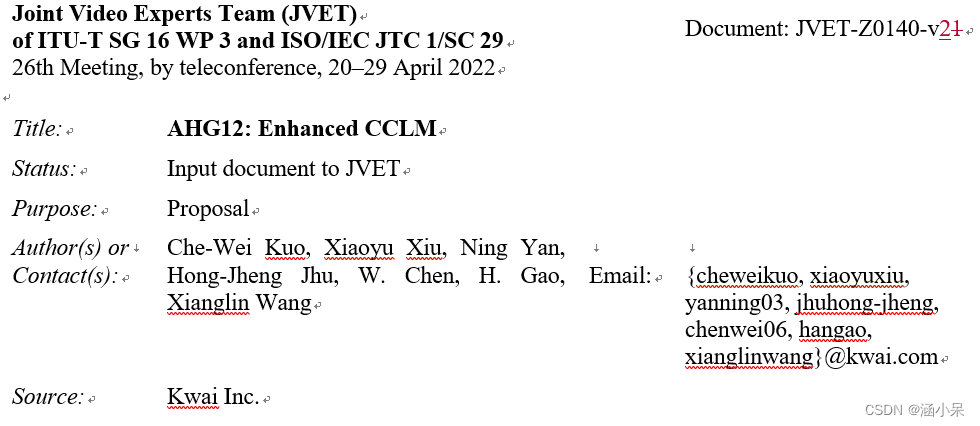This article comes from the JVET-Z0140 proposal:

In VVC/ECM, CCLM achieves significant coding performance improvement by exploiting the strong correlation between luma/chroma components. However, when CCLM derives the linear model, it only considers a single downsampled luminance sample, and ignores the possible correlation (such as spatial correlation) between adjacent luminance samples. The authors of this proposal observed that video sequences containing sharp changes in luminance intensity may lead to corresponding changes in chrominance values, known as the purple fringing problem.

This proposal proposes two techniques, filter-based linear model (FLM) and gradient linear model (GLM),
Method 1: Filter-based Linear Model (FLM)
FLM extends simple linear regression (SLR) in CCLM to multiple linear regression (MLR), which can be expressed as:

where C is the chroma sample to be predicted; Li is the i-th reconstructed luma sample around the chroma sample, αi is the i-th coefficient, β is the offset value, and N is the number of luma samples involved.
As shown in the figure below, use the same number of adjacent luma/chroma template samples as CCLM, i.e. 2 rows above/3 columns left luma samples and 1 row above/1 column left chroma samples. The MRL coefficients α and β are solved by Cholesky decomposition. In the current FLM design, multiple filter shapes are supported, with N ranging from 2 to 6. The choice of filter shape is toggled at the CU level.

Experimental results

Method 2: Gradient Linear Model (GLM) based on gradient
In contrast to CCLM, instead of downsampling luminance values, GLM exploits the gradient of luminance samples to derive a linear model . In other words, when deriving parameters, instead of using the downsampled luminance samples, the gradient G of the luminance samples is used to derive the linear model. The rest of the design of CCLM (e.g., parameter derivation, linear transformation of predicted samples) remains unchanged.

When the CCLM mode is enabled for the current CU, two flag bits are sent for the Cb/Cr component respectively, indicating whether to enable GLM for the component; if GLM is enabled for a component, a signal is further sent to a syntax element to select the One of four gradient modes for gradient calculations.

Experimental results:

This proposal proposes two improvements to CCLM, both of which achieve significant gains on color sequences containing drastic luminance intensity changes as well as on screen content sequences.